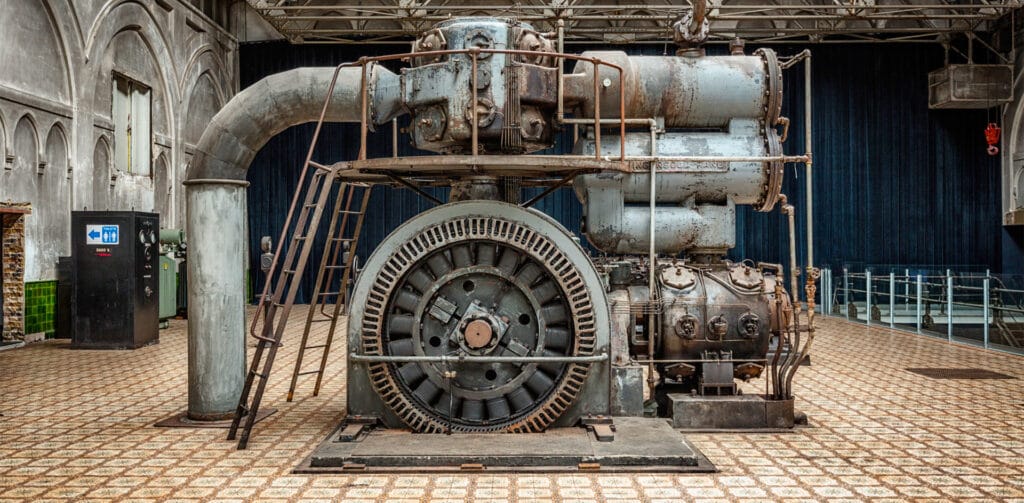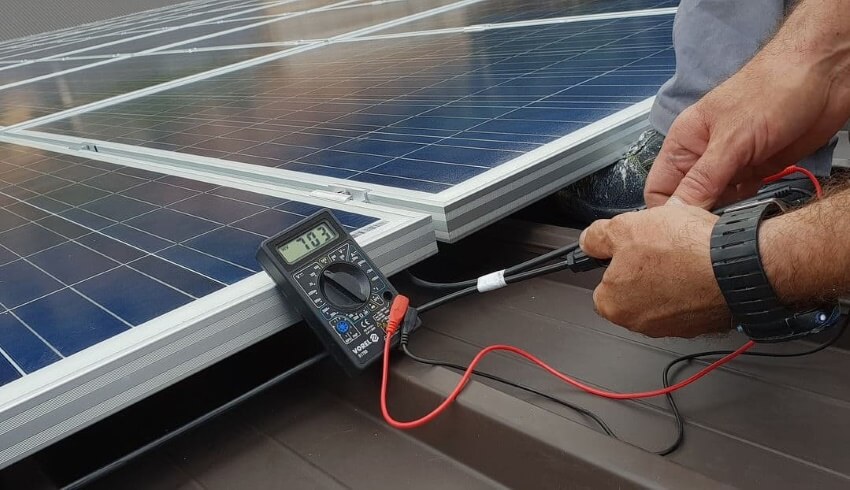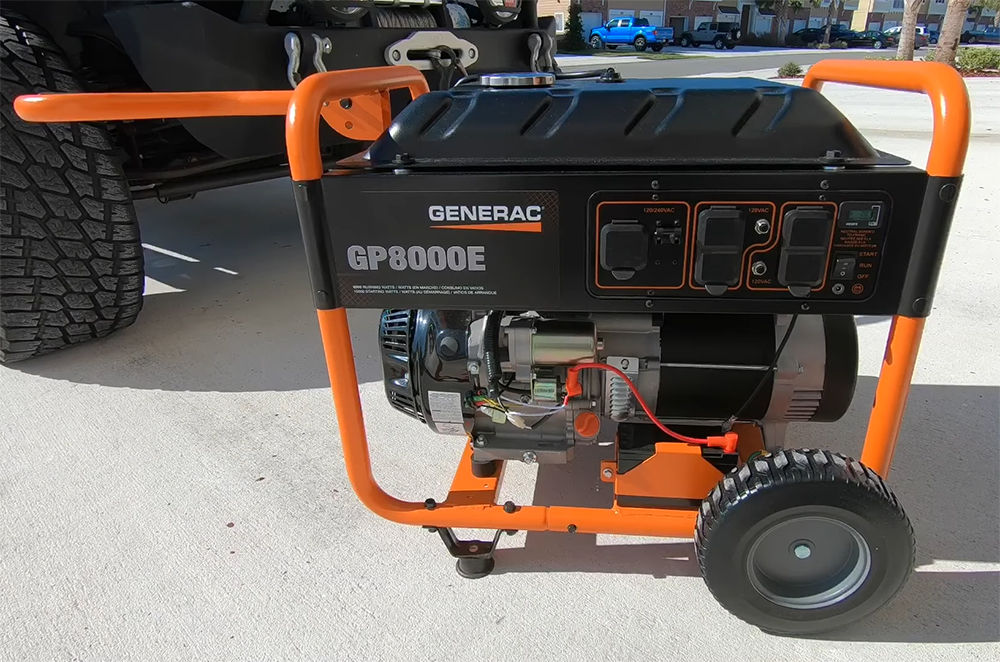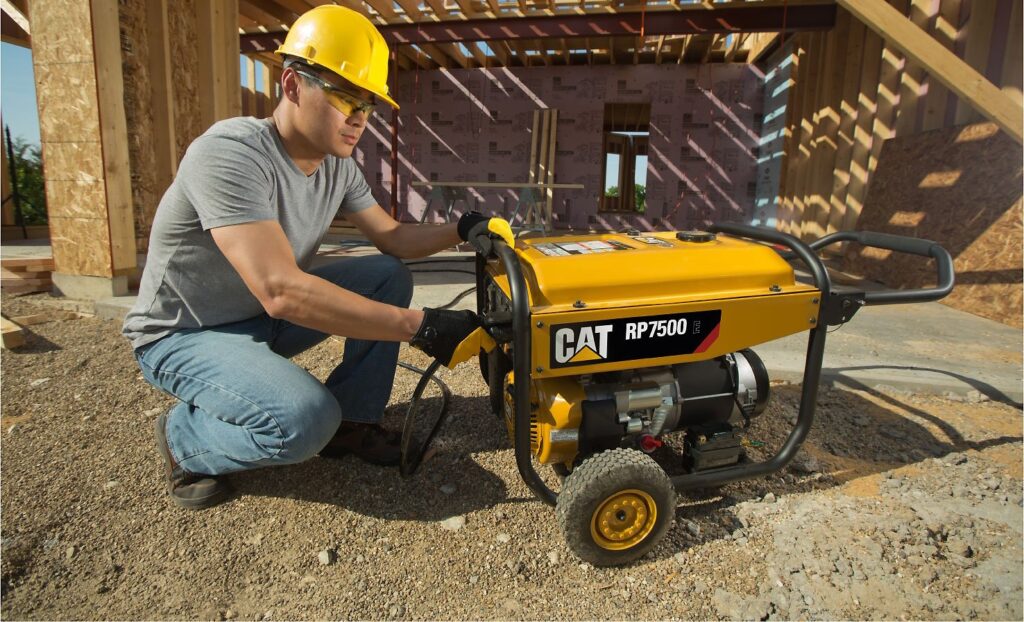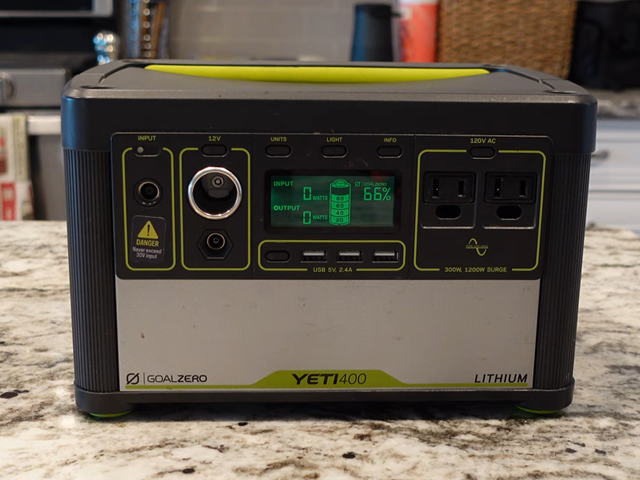If you’re looking for an ultra-quiet portable generator, two companies stand head and shoulders above the rest of the pack: WEN and Honda. These two brands have put significant research and development into making the portable generator something you don’t need ear protection to operate. On top of that, both WEN and Honda put a strong emphasis on reliability to ensure that you can get power whenever you need it most.
Choosing between WEN vs. Honda generators can be tough given the strong reputations of both of these companies. In this guide, we’ll take a closer look at how WEN and Honda generators stack up. That includes comparing several of the most popular WEN and Honda models head-to-head to help you decide which brand has the features you need.
WEN has been based in Illinois since the company was founded in 1951. Over the company’s long history, it’s done just about everything possible to promote the development of power tools – and the portable power units needed to keep them running. WEN has developed a reputation in the power tool community for developing inexpensive yet extremely high-quality motors, and it’s brought the same ethos of quality and durability to its generators.
Honda is one of the most recognizable names in motors anywhere in the world. The company started making generators in the 1960s and went on to become one of the first generator producers to introduce inverter technology. The quality of Honda generators is universally praised and it’s not at all uncommon to hear from users who have been putting a Honda power unit to work for a decade or more without problems.
Both WEN and Honda have developed a wide range of inverter generators in recent years to take advantage of quieter and more efficient engine technology. Most of the brands’ most popular models are now inverter generators, although they still make conventional power units that are more affordable and capable of delivering higher wattages. While Honda and WEN each offer some dual-fuel generator options, the companies’ most prominent generator models run solely on gasoline.
The two biggest differences between WEN and Honda generators are noise and price. Both companies have put a ton of work into making their generators among the quietest in the industry. However, Honda has excelled past WEN in this regard, creating generators that are anywhere from 5–10 times quieter.
The downside is that you pay handsomely for a genuine Honda engine and all of the R&D that went into it. For comparable generator models, Honda typically charges twice as much or more than WEN. So, you’ll definitely need to consider your budget when choosing between WEN vs. Honda.
Another difference worth noting is in the two companies’ warranty policies. Honda three-year warranty on all of its inverter and conventional generators, regardless of whether you’re using it for residential or commercial purposes. WEN’s warranty is noticeably shorter – just two years for inverter generators and one year for conventional generators. So, part of what you’re paying for with Honda is extra insurance against any problems with your power unit.
The best way to understand the differences between WEN and Honda generators is to compare and contrast popular models. Here, we’ll look at three different pairings of comparable WEN and Honda generators to see how they stack up.
| WEN 56200i | Honda EU2200i | |
| Type | Inverter | Inverter |
| Peak watts | 2000W | 2200W |
| Rated watts | 1600W | 1800W |
| Engine | 4-stroke OHV single cylinder | OHC, 4-stroke, single cylinder |
| Displacement | 79.7cc | 121cc |
| Fuel tank | 1.19 gal. | 0.95 gal. |
| Run time | 6 hrs (1/2 load) | 8.1 hrs (1/4 load) |
| Outlets | (2) 120V 20A Three-Prong; (1) 5V USB Port; (1) 12V DC 8.3A | (2) 120V Household; (1) 12V DC |
| Start type | Recoil | Recoil |
| Noise level | 50–55 dBA | 48–57 dBA |
| Dimensions | 18 x 11 x 18 in | 20.0 x 11.4 x 16.7 in |
| Weight | 48 lbs | 46.5 lbs |
| Warranty | 2-year limited | 3-year limited (residential and commercial) |
| VIEW ON AMAZON | VIEW ON AMAZON |
The WEN 56200i and the Honda EU2200i are dueling generators in the extremely popular 2,000-watt inverter category. The Honda boasts slightly more power – 2,200 watts of surge power and 1,800 watts of continuous power – which is significant when you’re running on a very limited amount of wattage. The engine is also much larger, at 121cc compared to the 80cc engine in the WEN generator.
When it comes to runtime, neither of these generators is great. The WEN can run for six hours at a 50% load, while the Honda runs for only about four hours at a 50% load. Either generator will require you to refuel at least once if you need a full workday of power.
The outlet panels are limited, as you’d expect for generators in this wattage class. Both units offer a 120-volt duplex panel and a 12-volt DC outlet – a relatively standard configuration. WEN added a USB charging port, which is a nice benefit if you’re using the generator to charge small electronics. The two generators are also almost identical in size and weight.
The biggest difference between these two power units is in the amount of noise they produce. WEN very nearly caught Honda here – the 56200i is only 2 dB louder than the EU2200i, which is hardly noticeable in most use cases.
So, the Honda EU2200i is slightly better outfitted in every respect except runtime. However, it costs roughly $800 more than the WEN 56200i. Given how closely matched these two generators are, it seems very difficult to justify the Honda’s price tag.
| WEN 56380i | Honda EU3000IS | |
| Type | Inverter | Inverter |
| Peak watts | 3800W | 3000W |
| Rated watts | 3400W | 2800W |
| Engine | 4-stroke OHV single cylinder | 4-stroke single cylinder, OHV |
| Displacement | 212cc | 196cc |
| Fuel tank | 2.23 gal. | 3.4 gal. |
| Run time | 8.5 hrs (1/2 load) | 20 hrs (1/4 load), 7.1 hrs (rated load) |
| Outlets | (2) 120V Three-Prong; (1) AC 120V NEMA TT-30R RV; (1) 12V DC, (1) 5V USB Port | (1) 20A 125V Duplex, (1) 30A 125V Locking Plug, (1) 12V DC |
| Start type | Recoil, electric | Recoil, electric |
| Noise level | 57 dBA | 50–57 dBA |
| Dimensions | 23.2 x 18 x 20.1 in | 25.9 x 17.6 x 22 in |
| Weight | 99.2 lbs | 131 lbs |
| Warranty | 2-year limited or 500 hrs of use | 3-year limited (residential and commercial) |
| VIEW ON AMAZON | VIEW ON AMAZON |
The WEN 56380i and Honda EU3000IS are two of the more powerful inverter generators in these two companies’ lineups. The 56380i offers an impressive 3,800 watts of surge power and 3,400 watts of running power, making it one of the best inverter options for higher power demands. The Honda offers significantly less juice – just 3,000 watts of surge power and 2,800 watts of running power. Despite the difference in outputs, the engines are similarly sized four-stroke single cylinder designs.
One of the drawbacks to the WEN generator is that the runtime is rather short. It’s outfitted with just a 2.23-gallon fuel tank, giving you a full workday of energy only if you draw 50% of the available power. The Honda, on the other hand, lets you draw almost all of the 2,800 running watts for a full day thanks to the large 3.4-gallon fuel tank.
Both generators are equipped with recoil and electric starters, which is nice to see. The outlets are also closely matched, with both models offering a 120-volt duplex, 30-amp twist-lock outlet, and 12-volt DC charging outlet. However, WEN goes a few steps further than Honda for ease of use. The 56380i includes a USB port for charging small electronics, as well as a digital multimeter that lets you monitor wattage and remaining runtime.
Honda has the edge, though, when it comes to noise. Despite putting out 3,000 watts of surge power, the EU3000IS makes just 50 dB when you turn it on and never gets louder than 57 dB. The WEN, by contrast, starts at 57 dB when you start it up. That’s a pretty significant difference.
When it comes to portability, the two generators are similar in size and design. Both have wheels mounted on the bottom and carry bars mounted on the frame. Note, however, that the Honda model weighs a whopping 32 pounds more – something you’re sure to notice when you have to lift the generator in and out of your car.
Again, price is a major consideration. Both of these generators have a lot to offer, but the Honda unit costs three times what WEN charges for the 56380i.
| WEN 56475 | Honda EM4000S | |
| Type | Conventional | Conventional |
| Peak watts | 4,750W | 4,000W (up to 5,000 for 10 sec.) |
| Rated watts | 3,750W | 3,500W |
| Engine | 4-stroke OHV single cylinder | Honda iGX270 4-stroke, OVH, single cylinder |
| Displacement | 223cc | 270cc |
| Fuel tank | 4 gal. | 6.2 gal. |
| Run time | 11 hrs (1/2 load) | 16 hrs (1/2 load) |
| Outlets | (2) 120V (5-20R); (1) 30A Three-Prong (L5-30); (1) 120V RV (TT-30R) | (2) 125V 20A GFCI Duplex; (1) 125V 30A Locking Plug; (1) 125/250V 20A Locking Plug |
| Start type | Electric, recoil | Electric, recoil |
| Noise level | 67–74 dBA | 61–63 dBA |
| Dimensions | 26.6 x 17.1 x 17.3 in | 41.1 x 27.8 x 28.3 in |
| Weight | 112.5 lbs | 204 lbs |
| Warranty | 1-year limited | 3-year limited (residential and commercial) |
| VIEW ON AMAZON | VIEW ON AMAZON |
WEN and Honda’s conventional generators boast a ton of power if you’re not too worried about bulk. The WEN 56475 offers 4,750 watts of surge power and 3,750 watts of running power. The Honda EM4000S is rated for 4,000 watts of surge power, but the engine boost allows it to produce up to 5,000 watts for 10 seconds. It can also put out 3,500 watts for as long as there’s gas in the tank.
If you’re looking to use one of these generators for backup power at home, the Honda has a distinct advantage: runtime. The massive 6.2-gallon fuel tank allows it to run for fully 16 hours at a 50% load. The WEN generator can only run for 11 hours at the same load.
Another important difference is that the Honda generator sports a 125-volt/250-volt 30-amp outlet. That allows you to power extremely heavy-duty appliances. The WEN has two 30-amp outlets to match the Honda, but neither of them supports 250-volt power. Instead, one is RV-ready, making this generator a bit more friendly for road trips.
Both generators come with electric and recoil starters to improve ease of use. However, only the WEN model includes a digital multimeter so that you can monitor power consumption and remaining runtime.
Once again, Honda has WEN beat when it comes to noise reduction. The Honda EM4000S is impressively quiet for a conventional generator, producing between 61 and 63 dB of noise. The WEN is louder as soon as you turn it on, at 67 dB, and it’s more than 10 times as loud as the Honda generator when you pull all of the available power from it.
The difference in size and weight between these generators reflects their different intended uses. The WEN generator is relatively small and lightweight, at just 112.5 pounds, which is nice given that it seems designed for larger RVs. The Honda is mounted on wheels for mobility, but it weighs in at more than 200 pounds – so, it’s better suited for use at home with large appliances than for road tripping.
It’s important to note that the Honda generator comes with a warranty that’s fully two years longer than the WEN warranty. However, this also stems from a huge disparity in pricing. The Honda costs roughly $2,400, compared to a very affordable $415 for the WEN generator. Ultimately, though, the choice between these two generators may rest more on how you plan to use it than on the price difference.
Both Honda and WEN produce reliable and impressively quiet generators that can handle just about any power demands.
WEN generators are the obvious choice for anyone on a tight budget. While WEN hasn’t matched Honda’s noise reduction technology quite yet, the company has added some nice ease of use features like USB charging ports on its inverter generators and digital multimeters on its higher-powered models.
If getting the quietest generator possible is your goal, there’s no question that Honda is the brand of choice. Honda generators are pricey, but you can also feel confident knowing that this is a company whose generators have stood up to the demands of heavy-duty power users around the world.
At the end of the day, choosing between WEN vs. Honda comes down to comparing the specific models you’re interested in, since the two companies’ generators diverge slightly in intended use as well as features.
